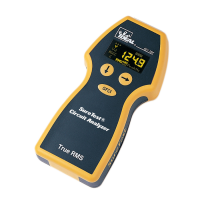Bonding the Receptacle Grounding Terminal to the Junction Box
A device may have to be bonded to the junction box with a jumper. According to section
250-146
9
of the NEC, an equipment bonding jumper shall be used to connect the
grounding terminal of a grounding-type receptacle to a grounded box unless grounded
as in (a) through (d).
(a) A surface mounted box, where the device yoke and the box have direct metal-to-
metal contact. This connection can be used to ground the device. This provision
does not apply to cover-mounted receptacles unless the box and cover combination
have been listed as providing an acceptable ground continuity between the box and
receptacle.
(b) Contact devices or yokes designed and listed for providing the grounding connection
between the device and the junction box. These shall be permitted in conjunction
with the supporting screws to establish the grounding circuit between the device
yoke and flush-type boxes.
(d) Floor boxes designed for and listed as providing satisfactory ground continuity
between the box and the device. Isolated receptacles that is required for the
reduction of electrical noise (electromagnetic interference) on the grounding circuit.
In these applications, the grounding terminal is purposely insulated form the
receptacle mounting to reduce the electrical noise coming from other loads on the
branch circuit.
The receptacle grounding terminal is connected to an insulated equipment grounding
conductor run with the circuit conductors. This grounding conductor is permitted to pass
through one or more sub-panels without connection to the panel board grounding
terminal as permitted in Section 384-20
10
.
Note that the use of an isolated equipment grounding conductor does not relieve the
requirement for grounding the raceway system and junction box.
False Grounds
The neutral conductor can only be bonded to the ground conductor at the main neutral
buss, where a large copper conductor carries all the return and faulted current back to
the earth. Sometimes through error or ignorance, the neutral and ground are connected
upstream from the service entrance. This is called a false, or bootleg ground. If the
neutral and ground are connected anywhere else in the building, all grounded metal
becomes part of the neutral conductor, constantly energized and creating various
voltage potentials on electronic equipment.
When using common receptacle testers, this condition shows up as normally wired.
Only the SureTest® Circuit Analyzer can correctly identify a false ground condition within
15 feet of the receptacle under test.
9
NEC code Article {250-146(a) through (d)}
10
NEC code Article {384-20}

